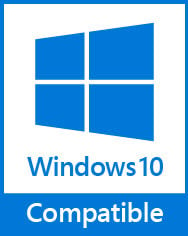
How to Fix: Hard Drive Not Showing Up
So, you decided to add another drive or connect an external drive to your Windows computer. However, nothing happens after connecting the new drive, and the drive is not showing up on File Explorer.
You have probably tried reconnecting the hard drive, but still no luck. This problem is frustrating, especially if you’ve just bought the drive.

- Your machine is currently running Windows 10
- Fortect is compatible with your operating system.
Recommended: To repair Windows Errors, use this software package; Fortect System Repair. This repair tool has been proven to identify and fix these errors and other Windows problems with very high efficiency.

- 100% safe as confirmed by Norton.
- Only your system and hardware are evaluated.
What Causes Hard Drives to Not Show Up?
Most of the time, hard drives not showing up on your system are due to improper connections. Probably, the SATA or USB connector you use is broken.
For external hard drives, it is possible that the USB drivers for your device are not installed correctly. It is also possible that the problem is caused by a conflict with the drive letter assignment or the volume of your hard drive is not properly allocated.
Fix #1: Initialize the Drive
If your hard drive failed to initialize, it is possible that a temporary error occurred on the MBR or Master Boot Record. Run Disk Management on Windows to fix this issue.
Step #1
Press the Windows + S key and search for ‘File Explorer.

Step #2
Open File Explorer and right-click on This PC from the side menu.
Step #3
Click on Manage to launch Computer Management.

Step #4
On the side menu, click on Disk Management. Select the Drive you wish to initialize and choose MBR or GPT partition.

- See Also: DU Recorder for PC Review & Use Guide
Fix #2: Allocate the Volume
Drives not showing up on File Explorer could have a volume that is not yet allocated. This means no program or application can read or write on that volume until it is allocated.
Step #1
Press the Windows + S keys on your keyboard and search for ‘Create and Format Hard Disk Partitions.

Step #2
Right-click on the Unallocated Volume of your drive and select New Simple Volume.

Step #3
On the Setup Wizard, click on Continue and follow the on-screen prompts to proceed.
Fix #3: Use Fortect
Fortect is a powerful tool that automatically fixes various issues on your PC. It can repair common Windows errors, prevents file loss, malware, and hardware failures, and optimizes your system to reach its peak performance.
Step #1
Download Fortect System Repair Tool on your computer and install it.
Step #2
Hit the Start Scan button to find errors that can cause hard drives not to appear.
Step #3
Click on Repair All to apply the suggested fixes for your system.
Fix #4: Check the Connections
If your hard drive is not showing up on File Explorer and Disk Management, the problem may be with your cable. Inspect the SATA or USB cable you are using and make sure that it doesn’t have physical damage like exposed wires.
Even if the connector doesn’t have physical damage, try to use another cable to connect your hard drive and see if your system will detect it.
Fix #5: Change Drive Letter Assignment
In some cases, Windows might mix up the drive letter assignment on your system. It is possible that your new hard drive was assigned a drive letter already being used or wasn’t assigned a drive letter at all, which is why it is not showing up on File Explorer.
Step #1
Press Windows + R on your keyboard and type diskmgmt.msc.
Step #2
Click Ok to run Disk Management.

Step #3
Right-click on the drive not showing up on your system and select Change Drive Letter and Paths.

Step #4
Click on Change and assign a new letter to your drive.

Fix #6: Update Drivers (External Hard Drives)
If your external hard drive is not showing up, the problem could be related to your drivers. Possibly, the driver for your external drive was not installed properly, or it has a bug or error that needs to be patched up.
To do this, update the driver for your external hard drive.
Step #1
Press Windows + X key on your keyboard and click on Device Manager.
Step #2
Click on Universal Serial Bus Controllers and right-click on your hard drive driver.
Step #3
Click on Update Driver and follow the on-screen prompts to continue the update process.




![[Guide] How to Clean Install Windows 10](https://cdn.techloris.com/app/uploads/2018/08/windows-10-clean-install.jpg)
![[Solved] Bluetooth Connection Issues in Windows 10](https://cdn.techloris.com/app/uploads/2020/04/image001.jpg)